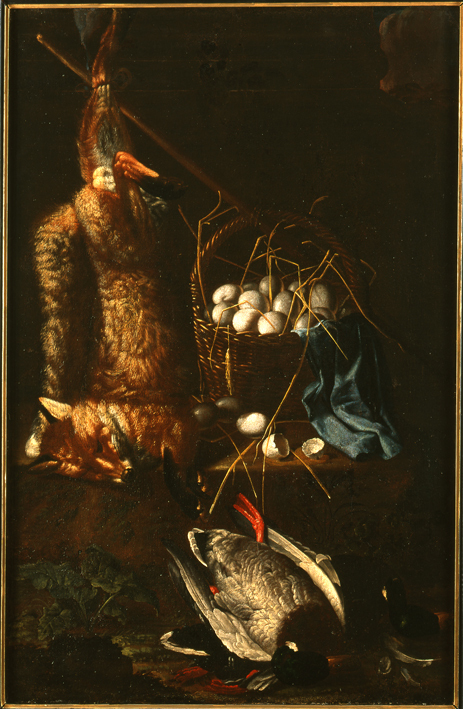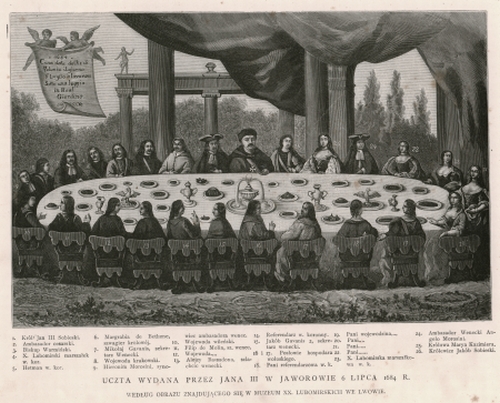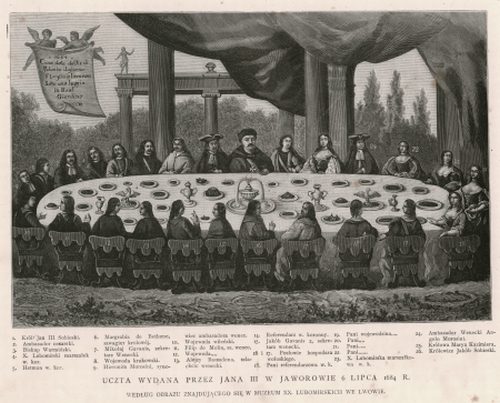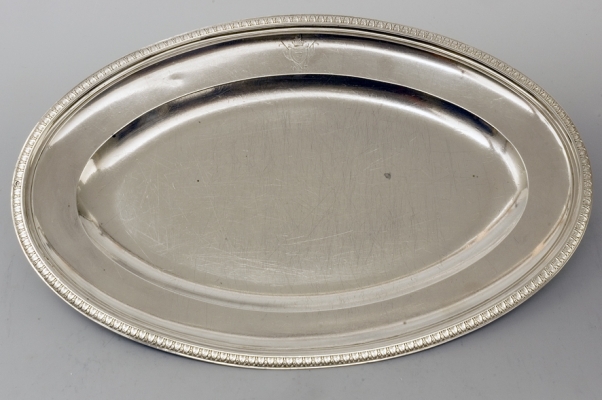Sarmatian cuisine at the time of Jan III Sobieski did not differ considerably from that of the first half of the seventeenth century. Its characteristic features still included a special liking for an excess of ingredients, i.e. assorted condiments that disguised the actual flavour of the dishes, which in the Baroque was regarded as the pinnacle of sophistication. The spices included saffron, pepper, cinnamon, ginger, cloves and nutmeg, etc., usually served in such amounts that foreigners dining at Polish tables often experienced difficulties with swallowing the piquant dishes. Monsieur de Hauteville (Gaspar de Tende), a French nobleman staying in Poland during the 1660s and 1670s, wrote: ” [The Poles] add to these sauces much sugar, pepper, cinnamon, cloves, nutmeg, olives, capers and raisins (...). The sums spent on the condiments and spices are such that the annual import of some grand lords in Poland costs 50 000 livres”. These opinions were echoed by Ulrich von Werdum, a Friesian who recorded his impressions from the early 1670s: ”No nation uses such amounts of salt and all sorts of spices as the Poles”. The observers aptly and correctly noticed that the Poles ate little bread but much meat, groats and peas, served as side dishes. Their prevailing principle was to consume a lot of greasy and savoury food. In his cookbook Compendium ferculorum albo zebranie potraw (1682) Stanisław Czerniecki gave recipes for, i. a. sausages, wurst, bouillon, the so-called hussar roast, bigos (a cabbage and meat stew) and flaki (beef tripe).
Potatoes did not appear at magnate courts until the beginning of the eighteenth century (when they were known as tartofle), but we owe the introduction of this vegetable to King Jan III Sobieski, known for his typically gentry predilections. While taking part in the Vienna expedition he supposedly sent to his wife Maria Casimira potatoes regarded as a curio of the Viennese imperial gardens, with an admonition to grow them on his estates. Served for the first time at royal receptions, they were treated with a great dose of scepticism and distrust, but soon became fashionable as an exotic vegetable eaten by magnate snobs, and in the nineteenth century for economic reasons became universal in Poland and across Europe.
Queen Maria Casimira (who placed on the Polish tables quite a few French dishes) is associated with her favourite omelette. As Irena Komasara wrote picturesquely in 1982: “(...) whenever during numerous royal voyages the carriage carrying the royal couple stopped for a brief sojourn in front of a gentry manor, the sound of eggs broken for an omelette could be heard”.
The court of Jan III – an orderly and good householder - was always distinguished for its affluence. In 1900-1903 Zygmunt Gloger established that royal dinners involved the use of ”33 large serving platters, 12 or 13 smaller ones, and breakfast and supper – 13 plates each. The dishes were served by 12 pages from noble families”. Sobieski was fond of banquets and took good care of his cooks and pastry chefs, both quite rare at the time.



